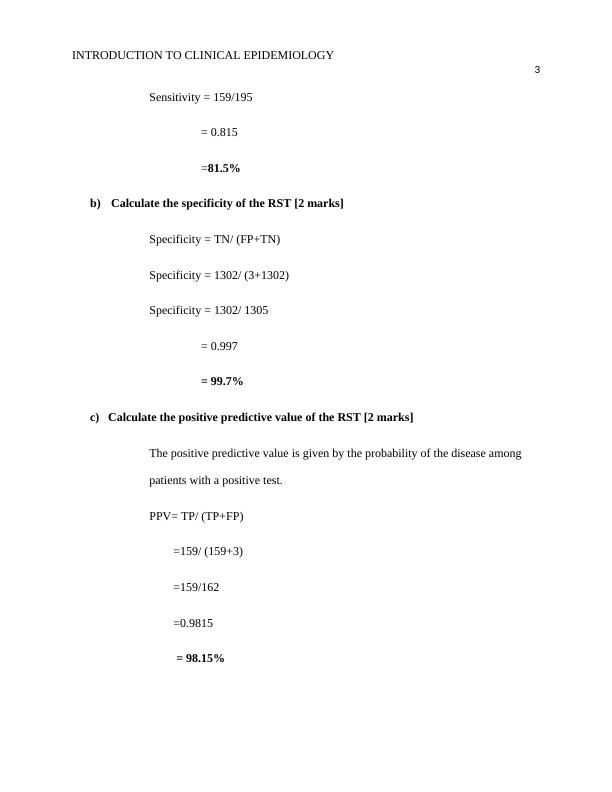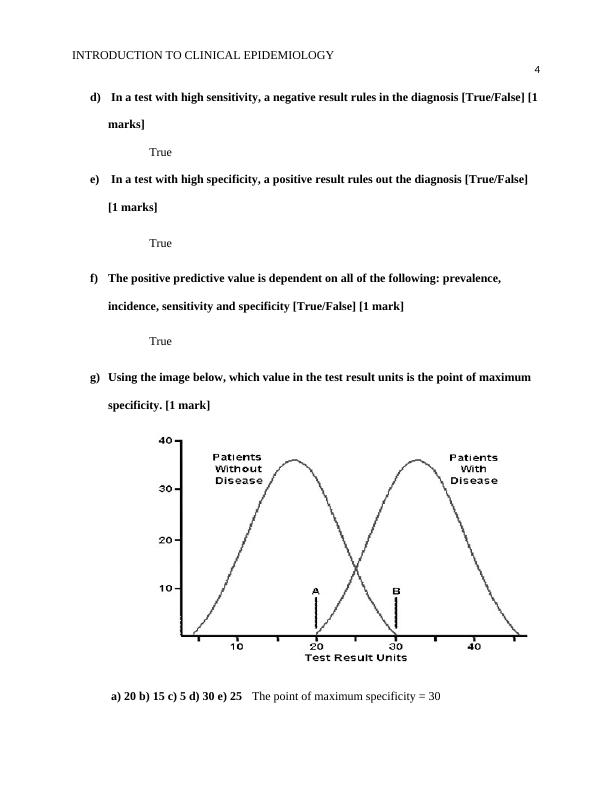Introduction to Clinical Epidemiology: Analysis of Diagnostic Test and Research Article
Investigating the impact of mass distribution of azithromycin on childhood mortality in sub-Saharan Africa.
12 Pages2139 Words231 Views
Added on 2023-06-10
About This Document
This article provides an analysis of a diagnostic test and a research article in clinical epidemiology. It includes a 2x2 table, sensitivity, specificity, and positive predictive value calculations. It also discusses the validity, clinical significance, and generalizability of the study.
Introduction to Clinical Epidemiology: Analysis of Diagnostic Test and Research Article
Investigating the impact of mass distribution of azithromycin on childhood mortality in sub-Saharan Africa.
Added on 2023-06-10
ShareRelated Documents
End of preview
Want to access all the pages? Upload your documents or become a member.




